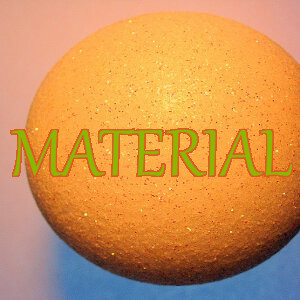Frequently Asked Questions
1. Do you deliver C.O.D. ( cash on delivery) ?
Unfortunately, for the time being we do not offer this opportunity.
2. How long can the resins be stored safe, what is their shelf life?
- Silicone resins are not sensitive they can store without any risks for several years.
- The epoxy resins need more care. In an airtight (jarred) environment the components can be kept without deterioration for 6 months.
Unfortunately, the polyurethane resins should be stored under vacuum to reach the 6 months shelf life. Otherwise the polyol absorbs water from the air and the isocyanate crystallises from the oxygen. As such, we recommend that you use this resin within some weeks of opening the original package.
3. The resin does not harden properly.
- Patiently wait for a while and give them the required time that is specified in the datasheet.
- Take into account the environmental temperature. Generally warm temperature accelerates while cold slows down the hardening process.
- Make sure the components are mixed properly.
- Check the weight ratio of the materials as described. Don’t conflate this with volume ratio
4. The cured epoxy, polyurethane or other casted resin remained bubbly.
The cured epoxy, polyurethane or other cast resin remain bubbly.
You probably did not degass the mixed resin.
Perhaps you did not choose the right casting technique and the air got stuck in a specific part of the model.
5. How can I avoid the air bubbles?
There are several opportunities for this.
- For silicone casting you may use the thin beam technique.
- Use a manual vacuum pump for vacuuming a vessel or a simple glass jar.
- The most effective method is to acquire a commercial or even industrial vacuum pump. This can be used for a suitable vacuum chamber. This option is sometimes costly.
6. The casted material, polyurethane, ivory, elfenbein, epoxy resin, etc. got stuck to the mould.
Use silicone mould which does not stick to anything. After a long time, several dozens of castings, the silicone may wear off and depreciate.
That’s why we suggest you to apply release agent to moulds particularly to moulds made from other materials. However, it is also recommended for silicone moulds.
7. How dangerous is the polyurethane resin?
Cured polyurethane is not harmful at all. More attention should be paid to the polyurethane isocyanate component. Provide good ventilation, use protective gloves, avoid inhalation.
The resins we offer have been developed for manual handling. Detailed warnings are stated in the packaging. Always follow the safety instructions.
8. How dangerous is the epoxy resin?
Cured epoxy resin is not dangerous at all. However, the components should be handled with care. For further precaution look at the datasheets.
9. What if the isocyanate has been crystallized?
In particular, the isocyanate component of the polyurethane resin tends to crystallize. In some cases, it can decrystallise at an appropriate temperature.
The best thing to do is to protect your resin with proper airtight storage. In most cases, resins are sensitive not only to the oxygen, but also to the moisture in the air.
10. The isocyanate component has crystallized.
The isocyanate component of polyurethanes crystallises when in contact with air. You can prevent this process with airtight storage which can significantly increase shelf life.
However, the crystallized isocyanate of some types polyurethane elastomers can be recycled, decrystallised. You can apply a simple heat treatment at 60° C until the component is fluid again.
11. The polyurethane resin becomes foamy (bubbly) right after pouring into mould.
The biggest enemy of polyurethane resin is water and moisture.
When the components are mixed and in case of the polyol absorbing water from the air during inadequate storage, the water reacts with isocyanate and carbon dioxide is formed.
This causes the foaming (bubbling), which after a short time of curing can no longer leave the casting. The solution is just to work with dry tools.
Please store the materials (particularly the polyol) in a dry, dark, cool place. Preferably under vacuum.
12. Do you deliver large quantities?
We deal only with small quantities. We recommend purchasing larger quantities from the manufacturer or in the case of a foreign manufacturer from the country representative.
13. Why don't you accept order for all materials in cold weather?
We do, but some materials are very risky to be delivered to ParcelLockers that stand outdoor. For example, the epoxy resin will freeze and get spoilt.
Other materials, for example silicone, do not really get affected. Ask our expert for advice before ordering in winter!
14. What about the materials your mixing tool, container etc. should be made of?
The best materials are polypropylene (PP) or polyethylene (PE) since these do not stick to anything.
However, it is possible that a particular pot or mixer may not be made of these, or perhaps it would be difficult or expensive to do so. It is worth considering disposable but inexpensive devices.
15. What should you do with unnecessary and deteriorated substances?
Never throw them in the rubbish bin. The best solution is to find the nearest chemical collector.
Otherwise all unwanted resin components should be mixed and cured. Then you can dispose of them properly. While the components are toxic, cured polyurethane, epoxy resin is not dangerous!
16. How long can I store my polyurethane and epoxy resin?
Our company determines the shelf life for 6 months in case of proper storage. However, based on our experience, materials held in vacuum may be stored for up to 2-3 years without serious quality loss.
17. I ordered an item, prepaid it, but the goods did not arrive.
As soon as we dispatch the goods we inform customers by email, followed by a courier tracking code.
You should first trace delivery by using this code.
If you encounter difficulties, please contact our customer service!
18. The cured product does not have the expected technical properties.
Bad mixing ratio, inadequate temperature, poor storage conditions. In more complicated cases, call our consultant for further advice!








